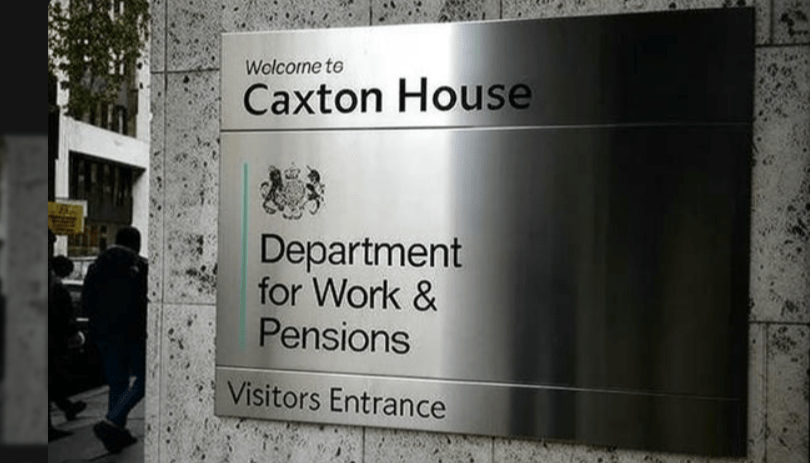More than 1.1 million adults across Britain are currently receiving Personal Independence Payment (PIP) for a wide range of musculoskeletal conditions, according to the latest data from the Department for Work and Pensions (DWP).
Who Can Claim PIP?
If you are aged 16 or over and under State Pension age, you may be eligible to claim PIP to help manage the additional costs that come with a musculoskeletal condition.
Eligibility is based on how your condition affects your daily living and mobility, rather than the diagnosis itself. This means even if your specific condition isn’t commonly known or severe by medical definition, you may still qualify if your symptoms impact your ability to function day-to-day.
Could You Also Be Eligible for ESA?
For individuals whose ability to work is limited by their condition, there may also be entitlement to a ‘new style’ Employment and Support Allowance (ESA). This benefit supports those with health conditions or disabilities that affect their ability to work.
How Much Could You Receive?
PIP payments are made every four weeks and can range from £114.80 to £737.20 per payment cycle, depending on your assessment outcome.
- Weekly rates: Between £28.70 and £184.30
- Every 4 weeks: Between £114.80 and £737.20
These figures reflect the current 2024 rates. Importantly, PIP payments are set to rise by 1.7% from April, offering a slight increase to help offset rising living costs.
Musculoskeletal Conditions That May Qualify
There are 87 musculoskeletal conditions recognised under current guidance, ranging from arthritis and back pain to genetic disorders and injuries.
If you’re living with a musculoskeletal condition and struggling with daily tasks or mobility, it’s worth checking whether you qualify for PIP or ESA. The support could make a significant difference to your financial well-being. Do not be put off if yours is not listed; see why at the bottom.
Osteoarthritis
- Osteoarthritis of Hip
- Osteoarthritis of Knee
- Osteoarthritis of other single-joint
- Primary generalised Osteoarthritis
Chronic pain syndrome
- Chronic fatigue syndrome (CFS)
- Fibromyalgia
- Pain syndromes – Chronic – Other / type not known
- Inflammatory arthritis
- Ankylosing spondylitis
- Arthritis – Psoriatic
- Arthritis – Reactive
- Inflammatory arthritis – Other / type not known
- Juvenile chronic arthritis (Still’s disease)
- Rheumatoid arthritis
Crystal deposition disorders
- Crystal deposition disorders – Other / type not known
- Gout
- Pseudogout
Osteonecrosis and osteochondritis
- Osteochondritis
- Osteonecrosis
Metabolic and endocrine disorders
- Osteomalacia
- Osteoporosis
- Other metabolic and endocrine disorders of musculoskeletal system
- Paget’s disease
- Rickets
Genetic disorders, dysplasias and malformations
- Achondroplasia
- Epiphyseal dysplasia – multiple
- Genetic disorders, dysplasias and malformations – Other / type not known
- Hereditary multiple exostosis (diaphyseal aclasis)
- Hypermobility syndrome
- Marfan’s syndrome
- Osteogenesis imperfecta
Benign tumours of bone
- Tumours of bone – benign
Fracture complications
- Compartment syndrome (Volkmann’s ischaemia)
- Fracture complications – Other / type not known
- Sudek’s atrophy
Other generalised musculoskeletal conditions
- Generalised musculoskeletal disease – Other / type not known
Shoulder disorders
- Adhesive capsulitis (frozen shoulder)
- Rotator cuff disorder
- Shoulder disorders – Other / type not known
- Shoulder instability
Elbow disorders
- Elbow disorders – Other / type not known
- Golfers elbow (medial epicondylitis)
- Tennis elbow (lateral epicondylitis)
Wrist and hand disorders
- Carpal tunnel syndrome
- Dupuytren’s contracture
- Tendon lesions
- Tenosynovitis
- Wrist and hand disorders – Other / type not known
Neck disorders
- Cervical disc lesion
- Cervical spondylosis
- Neck disorders – Other / type not known
- Whiplash injury
Non-specific back pain
- Back pain – Non-specific (mechanical)
Specific back pain
- Back pain – Specific – Other / type not known
- Kyphosis
- Lumbar disc lesion
- Lumbar spondylosis (OA spine)
- Schuermann’s disease
- Scoliosis
- Spinal stenosis
- Spondylolisthesis
Hip disorders
- Dislocation of the hip – congenital
- Hip disorders – Other / type not known
- Perthes disease
- Slipped upper femoral epiphysis
Knee disorders
- Bursitis
- Chondromalacia patellae
- Knee disorders – Other / type not known
- Ligamentous instability of knee
- Meniscal lesions
- Osgood schlatters disease
- Osteochondritis dissecans
- Patellar dislocation – Recurrent
Ankle and foot disorders
- Ankle and foot disorders – Other / type not known
- Club foot (talipes)
- Fore foot pain (Metatarsalgia)
- Hallux valgus /rigidus
Amputations
- Amputation – Lower limb(s)
- Amputation – Upper limb(s)
- Amputations – Upper & Lower limb/s
Injuries/fracture/Dislocation
- Abdomen – Injuries/Fracture/Dislocation
- Lower limb – Injuries/Fracture/Dislocation
- Multiple – Injuries/Fracture/Dislocation
- Pelvis – Injuries/Fracture/Dislocation
- Spine – Injuries/Fracture/Dislocation
- Thorax – Injury/Fracture/Dislocation
- Upper limb – Injury/Fracture/Dislocation
Other regional musculoskeletal disease
- Musculoskeletal disease – Regional / Localised – Other / type not known
Over One Million PIP Claimants Receive Support for Musculoskeletal Conditions
The latest government figures reveal that more than one million individuals across the UK are receiving Personal Independence Payment (PIP) for musculoskeletal conditions as of the end of October 2024.
Breakdown of PIP Claimants by Region
The total number of claimants receiving PIP support for musculoskeletal conditions stands at 1,126,096, with the following regional distribution:
- England and Wales: 1,102,325
- Scotland: 22,189(This excludes cases transferred to or new claims under Adult Disability Payment)
- Claimants living abroad: 976
Important Reminder for PIP Applicants
It’s crucial to note that PIP is assessed based on how a condition affects your daily life and mobility, not the condition itself. Even if your specific musculoskeletal condition isn’t listed or widely recognised, you may still be eligible for support.
Claimants are strongly encouraged to explore eligibility and not dismiss the possibility of receiving assistance, especially given the broad spectrum of musculoskeletal conditions acknowledged within the system.






